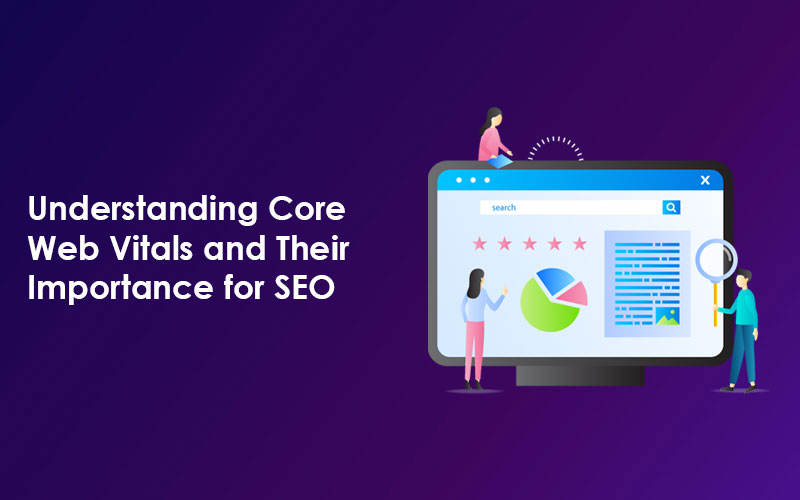Hello, digital adventurers and SEO enthusiasts! Welcome to a world where websites tango with algorithms and user experience takes center stage. Today, we embark on a thrilling journey through the virtual labyrinth, where the game’s rules constantly shift, and staying ahead of the curve is the ultimate quest.
Picture this: websites soaring through the boundless skies of the internet, performing daring acrobatics to catch the wandering eyes of users. Each click, each scroll, and each interaction becomes a dance of destiny, where success lies in the hands of a mysterious force called “Search Engine Optimization.”
But wait, there’s a twist in this tale of digital conquest! Amidst the adrenaline-fueled race for search rankings, a new superstar emerges from the shadows, captivating hearts and dictating the rules – it’s none other than the enigmatic “User Experience.”
Buckle up as we unravel the secrets of SEO and explore the hidden gems of user satisfaction in the ever-evolving digital landscape. Get ready to decode the language of algorithms, feel the pulse of your audience, and discover the magic formula for online triumph.
What are Core Web Vitals?
Core Web Vitals are a set of user-centric metrics developed by Google to measure and evaluate website user experience. They focus on three specific aspects of a website’s performance that significantly impact user satisfaction: loading speed, interactivity, and visual stability.
- Largest Contentful Paint (LCP): LCP measures the time it takes for the largest content element, such as an image or a block of text, to become visible to the user as the page loads. A fast LCP indicates that the main content is quickly rendered, enhancing the initial user experience.
- First Input Delay (FID): FID gauges the responsiveness of a website by measuring the time between a user’s first interaction, like clicking a button or selecting a menu, and the browser’s response to that action. A low FID ensures a smooth and interactive user experience.
- Cumulative Layout Shift (CLS): CLS evaluates the visual stability of a page by measuring the unexpected layout shifts that occur during the page load. A lower CLS score means that elements on the page are less likely to move around, preventing frustrating user experiences caused by sudden shifts.
These Core Web Vitals, when measured and optimized effectively, provide web developers and SEO specialists with valuable insights into the user experience, helping them create websites that load quickly, respond promptly to user interactions, and maintain visual stability throughout the browsing session.
Why Core Web Vitals are Important for SEO?
Core Web Vitals have emerged as a critical component for achieving SEO success. Google’s endorsement of Core Web Vitals highlights that these user-centric metrics are far from mere buzzwords; they hold substantial data supporting their role in improving user satisfaction, engagement, and search engine rankings.
In fact, as per Google’s study, an increase in page load time from 1 second to 10 seconds leads to a staggering 123% rise in users bouncing off the page. Additionally, a separate survey reveals that 53% of mobile users abandon sites taking longer than three seconds to load. Optimizing Core Web Vitals becomes vital in reducing bounce rates and retaining valuable visitors.
Moreover, Core Web Vitals play a pivotal role in boosting conversion rates. By delivering a faster and more responsive user experience, businesses can drive higher conversion rates and increase their bottom line.
Engagement is the heartbeat of online success, and Core Web Vitals directly impact it. Websites with good Core Web Vitals metrics experience higher user engagement and longer average session durations. Keeping users immersed and satisfied leads to repeat visits, extended browsing sessions, and a higher likelihood of sharing the content with others.
In the mobile-driven world, Core Web Vitals are a necessity. With over half of the global web traffic coming from mobile devices, users demand seamless smartphone experiences. Unfortunately, a staggering 70% of websites take more than 5 seconds to display the main content on mobile devices. By optimizing for Core Web Vitals, businesses can tap into the vast mobile market, ensuring that their websites are mobile-friendly and load quickly on handheld devices.
Optimizing for Core Web Vitals: Key strategies!
Optimizing Core Web Vitals is a crucial step towards enhancing user experience and improving search engine rankings. Let’s explore the key strategies to achieve these goals.
1. Enhancing Largest Contentful Paint (LCP)
- Optimizing Server Response Times:
One of the primary factors affecting LCP is the time it takes for the server to respond to a user’s request. Website owners should prioritize efficient server configurations and choose reliable hosting providers to reduce server response times. This may involve upgrading server hardware, implementing server-side caching, and optimizing database queries to ensure swift responses.
- Caching and Content Delivery Networks (CDNs):
Leveraging caching mechanisms is a powerful technique to improve LCP. By storing static resources such as images, CSS files, and JavaScript directly on the user’s device, caching reduces the necessity for repeated server requests. The outcome is a faster loading time and a more seamless user experience. Additionally, harnessing Content Delivery Networks (CDNs) further boosts LCP performance by delivering website content from servers located closer to the user, effectively reducing latency and improving overall loading speed.
2. Reducing First Input Delay (FID)
- Efficient JavaScript Handling:
JavaScript execution can significantly impact FID, as it blocks the main thread, causing delays in user interactions. To reduce FID, optimize and streamline JavaScript code by eliminating unnecessary scripts and minimizing their size. Consider lazy loading non-essential scripts, deferring scripts that are not required during initial page load, and utilizing asynchronous loading for better performance. By optimizing JavaScript handling, you ensure that user interactions respond promptly, leading to a smoother and more engaging user experience.
- Web Worker Utilization for Time-Consuming Tasks:
Web workers are a valuable tool to offload time-consuming tasks from the main thread, mitigating their impact on FID. By delegating tasks such as heavy calculations, data processing, or image resizing to web workers, the main thread remains free to handle user interactions without delays. This results in improved FID and a more responsive website. Web workers empower websites to maintain interactivity even when dealing with complex tasks, enhancing the overall user experience.
3. Minimizing Cumulative Layout Shift (CLS)
- Proper Image and Media Element Dimensions:
One of the leading causes of Cumulative Layout Shift (CLS) is when images and media elements load without predefined dimensions. This can cause the content to unexpectedly shift as the page loads, frustrating users. To minimize CLS, always specify width and height attributes for images and video elements in your HTML. This ensures that the browser reserves the necessary space for these elements, preventing sudden layout shifts and creating a more stable browsing experience.
- Prioritizing Content Loading and Resource Allocation:
CLS can also occur when resources such as images, ads, or fonts load at different times, pushing content around as they appear. To reduce CLS, prioritize the loading of critical content that affects the page’s layout. By using lazy loading techniques, you can defer non-essential resources, allowing the primary content to load first and maintain its position. Additionally, consider allocating space for dynamically sized elements during page load to avoid layout shifts once they render.
How to Measure Core Web Vitals?
Understanding and optimizing the user experience on your website demands the essential practice of measuring Core Web Vitals. The following methods are available to measure these user-centric metrics, empowering us with valuable insights to enhance our website’s performance and user satisfaction.
1. Google’s PageSpeed Insights:
Google’s PageSpeed Insights is a powerful, user-friendly tool designed to evaluate and analyze Core Web Vitals. By simply entering your website’s URL into the tool, you can access a comprehensive report on your website’s Largest Contentful Paint (LCP), First Input Delay (FID), and Cumulative Layout Shift (CLS) scores. These metrics are critical in understanding how users perceive and interact with your website.
The report generated by PageSpeed Insights provides valuable data and actionable insights to improve your website’s performance. It not only highlights areas where your website excels but also pinpoints potential issues affecting user experience. The tool offers suggestions and recommendations to address these issues and enhance your Core Web Vitals scores.
2. Chrome User Experience Report (CrUX):
Chrome User Experience Report (CrUX) is an invaluable resource offered by Google, providing access to a vast public dataset that aggregates real-world user experience data from millions of websites.
CrUX’s strength lies in its foundation on real user interactions across the web. This ensures that the data collected genuinely reflects the experiences of actual users as they engage with various websites. Leveraging CrUX, website owners and developers access valuable insights from a user’s perspective. It enables a comprehensive understanding of how users perceive crucial aspects like loading speed, interactivity, and visual stability, offering a holistic view of user satisfaction.
3. Web Vitals JavaScript Library:
The Web Vitals JavaScript library enables you to track key performance indicators such as Largest Contentful Paint (LCP), First Input Delay (FID), and Cumulative Layout Shift (CLS). As users interact with your website, the library records these crucial metrics, providing valuable insights into how users experience your website in various browsing scenarios.
The Web Vitals JavaScript library provides a significant advantage with its real-time data capabilities. This means you can access the most current information on your website’s performance at any given moment. Real-time monitoring empowers you to swiftly identify and address any user experience issues that may arise. By collecting Core Web Vitals data programmatically, you gain the ability to conduct in-depth analysis, spotting trends and patterns in user behavior for a more informed optimization approach.
4. Third-party Monitoring Tools:
Third-party monitoring tools, including popular options like GTmetrix, Pingdom, and WebPageTest, are valuable resources for measuring and analyzing Core Web Vitals and overall website performance.
These tools offer a user-friendly interface that allows website owners and developers to assess their website’s loading speed, interactivity, and visual stability, which are critical aspects of Core Web Vitals.
A primary benefit of these tools is their capacity for in-depth analysis. In addition to Core Web Vitals metrics, they provide a wealth of additional performance data, including page load times, server response times, and resource sizes. This extensive data allows you to identify areas that influence the user experience precisely and enables you to implement targeted optimizations for enhanced website performance.
The Key Takeaway:
Understanding Core Web Vitals and their importance for SEO is imperative in the ever-evolving digital marketing landscape. From optimizing page loading speed and reducing first input delays to addressing cumulative layout shifts, every step taken to enhance Core Web Vitals contributes to a seamless and enjoyable browsing experience for our audience.
By measuring Core Web Vitals through tools like Google’s PageSpeed Insights, Chrome user experience, and the Web Vitals JavaScript library, website owners and developers gain valuable insights into their website’s performance and identify areas for improvement.
As the digital landscape continues to evolve, Core Web Vitals remain an essential compass to navigate the dynamic terrain of SEO and user experience. By embracing these metrics and optimizing our websites accordingly, we can create a digital haven that delights users, captures their loyalty, and propels us to the forefront of search engine rankings.





